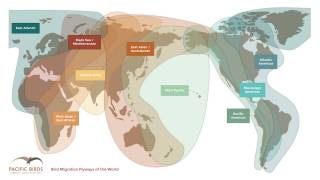A World With Fleeting Flu Cases

The current influenza surveillance data should be interpreted with caution, says the World Health Organization (WHO).
The WHO announced on March 1, 2021, the ongoing COVID-19 pandemic has influenced to varying extents health-seeking behaviors globally. The various hygiene and physical distancing measures implemented to reduce the spreading of the SARS-CoV-2 coronavirus have likely played a role in reducing influenza virus transmission.
The WHO’s Influenza Update N° 388 found despite continued or even increased influenza virus testing for influenza in some countries, activity remained at lower levels than expected for this time of the flu season.
The WHO’s laboratories tested more than 237,021 specimens. A total of 382 samples were positive for influenza viruses, of which 137 (35.9%) were typed as influenza A and 245 (64.1%) as influenza B.
Of the characterized B viruses, (99.5%) belong to the B-Victoria lineage.
In the Northern Hemisphere's temperate zone, influenza activity remained below baseline, though sporadic detections of influenza A and B viruses continued to be reported in some countries.
The U.S. CDC's Week #8 report found just 32 confirmed influenza specimens identified from over 22,000 completed flu tests.
In the temperate zone of the Southern Hemisphere, influenza activity was reported at the interseasonal level.
In the Caribbean and Central American countries, sporadic influenza detections were reported.
In tropical South America, sporadic detections were reported in Colombia.
In tropical Africa, influenza activity was reported in some reporting countries in Western, Middle, and Eastern Africa in recent weeks.
In Southern Asia, sporadic influenza detections were reported in India.
Previously, the WHO Consultation and Information Meeting on the Composition of Influenza Virus Vaccines for Use in the 2021-2022 Northern Hemisphere Influenza Season was held in late February 2021.
This WHO meeting’s recommended composition of influenza vaccines for use in the 2021-2022 northern hemisphere influenza season can be viewed at the following link.
The most common flu shot for the 2020-2021 influenza season in the Northern Hemisphere are quadrivalent vaccines that protect people against four viruses; influenza A (H1N1) virus, influenza A (H3N2) virus, and two influenza B viruses, said the CDC on August 21, 2020.
Two new influenza vaccines have been licensed for use in people aged 65 years and older for the 2020-2021 flu season: a quadrivalent high-dose influenza vaccine and a quadrivalent adjuvanted influenza vaccine. Previously, high-dose and adjuvanted influenza vaccines were only available in trivalent formulations.
Vax-Before-Travel publishes research-based vaccine news.
Our Trust Standards: Medical Advisory Committee

























